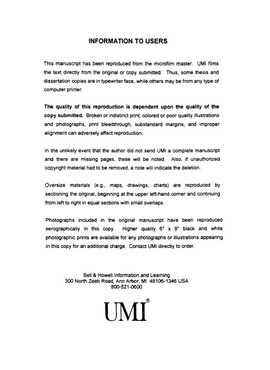Understanding and managing others: The impact of discriminative facility upon social influence.
| dc.contributor.advisor | Durso, Francis, | en_US |
| dc.contributor.author | Hackworth, Carla Anne. | en_US |
| dc.date.accessioned | 2013-08-16T12:18:05Z | |
| dc.date.available | 2013-08-16T12:18:05Z | |
| dc.date.issued | 2001 | en_US |
| dc.identifier.uri | https://hdl.handle.net/11244/265 | |
| dc.description.abstract | The results of two studies provided support for the importance of being sensitive to situational nuances (i.e., discriminative facility), especially when interpreting others' negative behaviors. Study 1 empirically clarified the distinction between discriminative facility and a seemingly related construct, self-monitoring. Additionally, a new, more convenient measure of discriminative facility was constructed and validated. Study 2 established boundary conditions for the efficacy of discriminative facility. Consistent with past research (Chiu, Hong, Mischel, & Shoda, 1995), discriminative facility was associated with positive social interaction quality. However, this finding was limited to the interpretation of negative (but not positive) behaviors. In addition, individuals high in discriminative facility demonstrated greater flexibility of social influence strategy use than individuals low in discriminative facility. | en_US |
| dc.format.extent | ix, 89 leaves ; | en_US |
| dc.subject | Social intelligence. | en_US |
| dc.subject | Psychology, Social. | en_US |
| dc.subject | Social influence. | en_US |
| dc.title | Understanding and managing others: The impact of discriminative facility upon social influence. | en_US |
| dc.type | Thesis | en_US |
| dc.thesis.degree | Ph.D. | en_US |
| dc.thesis.degreeDiscipline | Department of Psychology | en_US |
| dc.note | Adviser: Francis Durso. | en_US |
| dc.note | Source: Dissertation Abstracts International, Volume: 62-01, Section: B, page: 0599. | en_US |
| ou.identifier | (UMI)AAI3001312 | en_US |
| ou.group | College of Arts and Sciences::Department of Psychology |
Files in this item
This item appears in the following Collection(s)
-
OU - Dissertations [9425]
